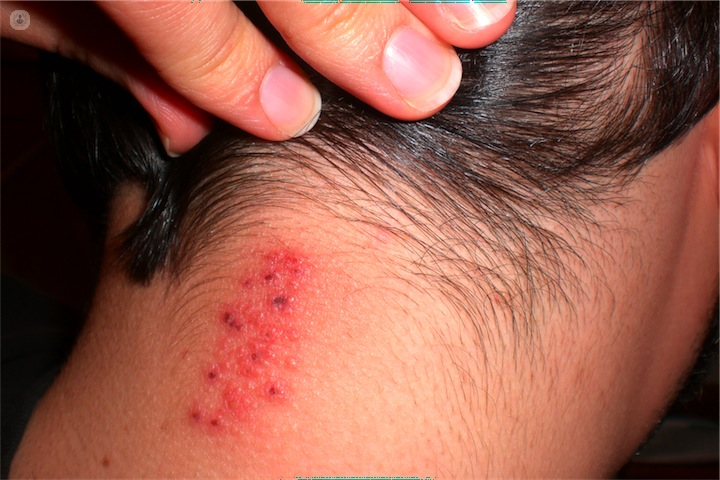


What are skin diseases?
Skin diseases are a broad range of conditions affecting the skin, and include diseases caused by bacterial infections, viral infections, fungal infections, allergic reactions, skin cancers, and parasites.
Types of skin disease
There are many different kinds of skin disease, most of which are completely unrelated save for the fact that they affect the skin. Skin diseases can be categorised as either being caused by infection (bacterial, viral, or fungal), allergies, autoimmune reactions, parasites, or cancers. Some common types of skin disease are:
Bacterial infections:
- Cellulitis – common infection caused by bacteria entering a break in the skin.
- Impetigo – highly infectious and itchy, it tends to manifest as red sores. It is more commonly seen in children and babies than adults.
- Boils and carbunkles – infections of hair follicles or oil glands that develop as a sore lump over a few days, eventually filling with pus. A carbuncle is a painful concentration of boils linked to each other beneath the skin.
- Staph infection – caused by Staphylococcus entering and infecting a cut in the skin. Varies in severity from simply boils to flesh-eating infections.
Viral infections:
- Warts – generally harmless lumps caused by a virus that usually clear up without treatment, but take a long time to do so.
- Verucas – type of wart that commonly appears on the foot (plantar wart)
- Cold sores and herpes – caused by the herpes simplex virus, these wart-like sores can appear on the mouth (cold sores) or genitals (herpes).
- Chickenpox – a common infectious disease in children known for the red itchy spots it causes.
- Shingles – a reactivation of the dormant chickenpox virus, shingles causes clusters of painful blisters. It only occurs in people who have already had chickenpox.
Fungal infections:
- Ringworm, including athlete’s foot. Not a worm, as it’s name suggests, it usually appears as a red, scaly patch that itches. It may appear in a ring or bump.
- Yeast infection (candidiasis) – caused by the candida fungus, which naturally appears in small amounts on the body. Infections occur when the yeast builds up and grows out of control. Infections in the mouth and throat are called thrush.
Allergic reactions:
- Eczema (allergic dermatitis)
- Hives (urticaria) – a raised, itchy rash. Can be causes by allergies, and also by insect bites, nettle stings, etc.
- Itching
Autoimmune diseases:
- Psoriasis – characterised by flaky, red patches of skin, this chronic condition is thought to be caused by the immune system attacking skin cells.
- Eczema (atopic dermatitis)
Parasites:
- Scabies – an infestation of mites that burrow into the skin and lay eggs, causing a rash and intense itching.
- Bedbugs – tiny parasitic insects that suck human blood, preferring warm environments, such as beds.
- Headlice – tiny, wingless insects that live in the hair, drinking blood from the scalp. They are commonly found on the hair of children, with schools frequently experiencing outbreaks. Their eggs (nits) are often found attached to the hairs of the patient.
- Mites – tiny arachnids related to ticks. There are several types that feed on humans, including scabies (see above).
Which type of specialist treats skin diseases?
Dermatologists specialise in treating skin diseases, while other specialists may be needed to treat certain conditions, such as skin cancer.
